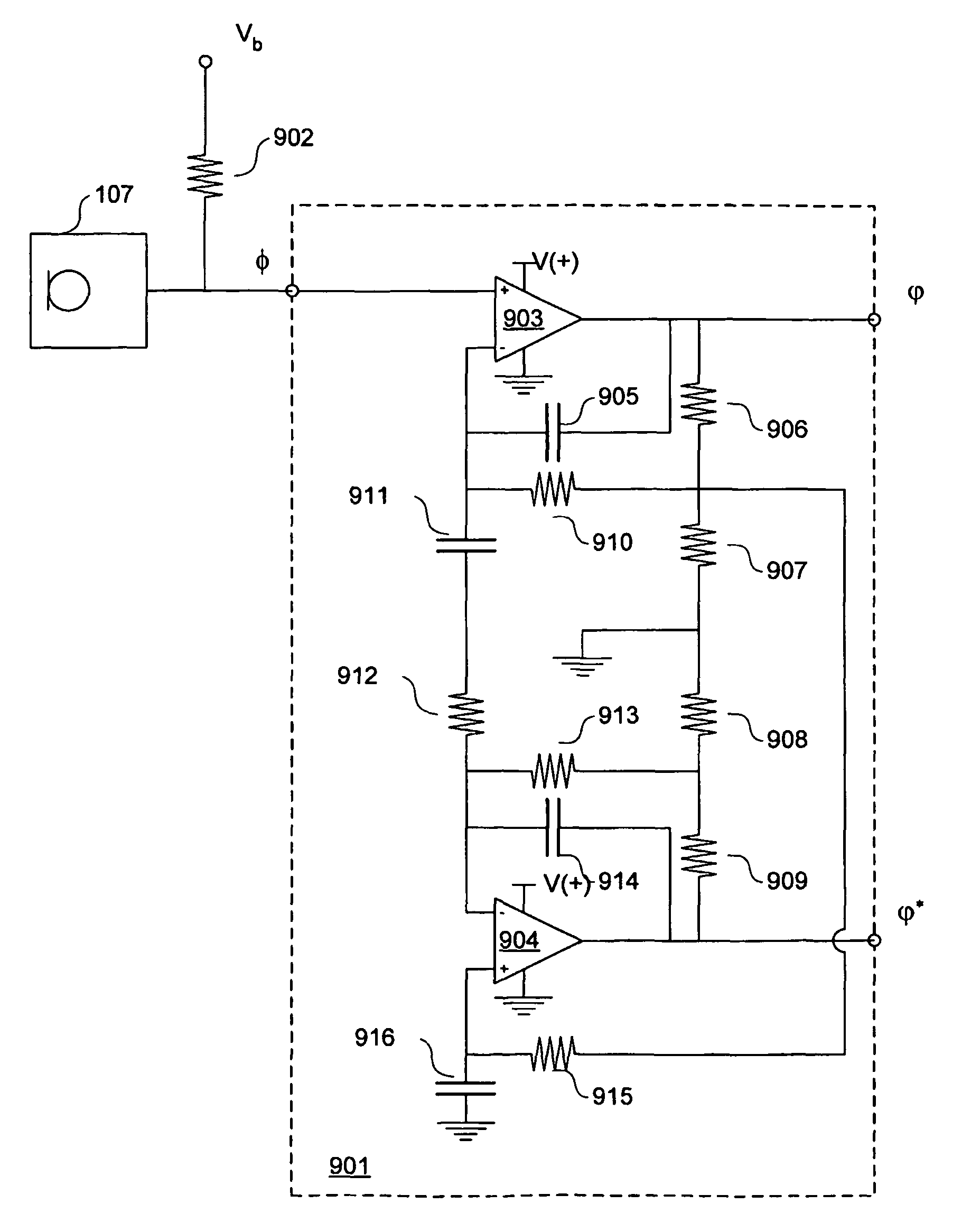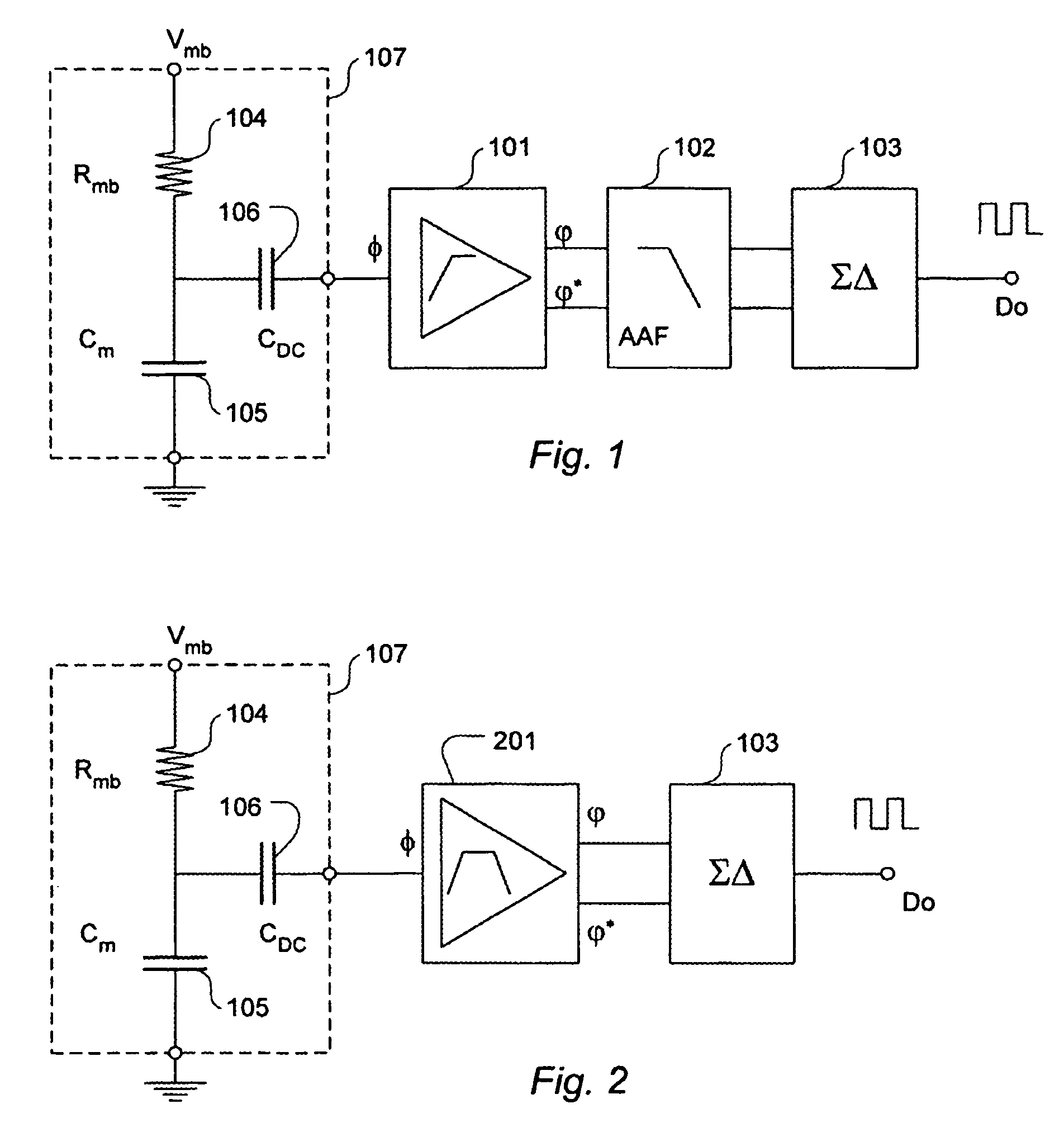Digital microphone
a digital microphone and microphone body technology, applied in the field of digital microphones, can solve the problems of large area of amplifier die, inability to meet the needs of new high-sensitivity telecom microphones, and large physical size of filter elements, so as to achieve high input impedance, reduce the effect of reducing and reduce the size of the filter
- Summary
- Abstract
- Description
- Claims
- Application Information
AI Technical Summary
Benefits of technology
Problems solved by technology
Method used
Image
Examples
Embodiment Construction
[0076]FIG. 1 shows a digital microphone comprising a microphone element, a preamplifier with a high-pass filter function, an anti-aliasing filter and an analogue-to-digital converter. The microphone element Cm, 105 comprises a first member in the form of a membrane or diaphragm that moves in response to a sound pressure acting on the membrane. The membrane moves relative to a second member typically a so-called back plate or simply a microphone casing which also serves for holding the movable membrane. One of the members, typically the second member is coupled to a ground reference whereas the other member, typically the membrane, is biased via a bias resistor Rmb, 104 that is coupled to a DC bias voltage Vmb. Thereby an electrical charge is provided on the membrane or movable member of the microphone element 105, Cm. Since the amount of charge is kept constant (for very low frequencies and up), an electrical microphone signal is provided by the membrane when it moves in response to...
PUM
 Login to View More
Login to View More Abstract
Description
Claims
Application Information
 Login to View More
Login to View More - R&D
- Intellectual Property
- Life Sciences
- Materials
- Tech Scout
- Unparalleled Data Quality
- Higher Quality Content
- 60% Fewer Hallucinations
Browse by: Latest US Patents, China's latest patents, Technical Efficacy Thesaurus, Application Domain, Technology Topic, Popular Technical Reports.
© 2025 PatSnap. All rights reserved.Legal|Privacy policy|Modern Slavery Act Transparency Statement|Sitemap|About US| Contact US: help@patsnap.com



